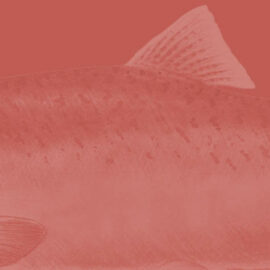The Key in the Code
On Oregon’s Rogue River, genetic detectives take on shapeshifters, weird science, and an ancient mystery.
Part III, in the First Salmon, Last Chance story series.
By Ramona DeNies
On the banks of Oregon’s Rogue River, six children gawk at a very dead fish. Wriggling in oversize lifejackets, they cluster around a taller boy, who rolls the carcass onto a river rock.
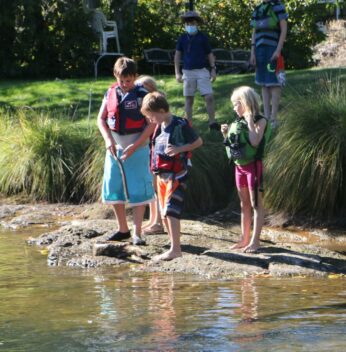
The fish is mottled gray, probably stinky, and, from the kids’ expressions, pretty fascinating.
From his passing raft, Wild Salmon Center Science Director Dr. Matt Sloat can just make out the buck’s hooked kype, jaw hanging wide like the small fry around him.
“Looks like you found a salmon,” he calls. “He came here all the way from the ocean. Pretty cool, huh?”
As his raft drifts past, the kids turn back to prodding their science experiment.
This is not, perhaps, the most dignified end for a salmon, whose hero’s journey home likely spanned thousands of miles and myriad challenges. But it might be a fittingly forensic one for the scientific mystery he represents.
From the raft, everything here looks fine: spawning fish, happy fishers, curious kids. It’s a beautiful, late September afternoon, but Dr. Sloat is worried.
On the Rogue, something is shifting, just beneath the water’s surface.
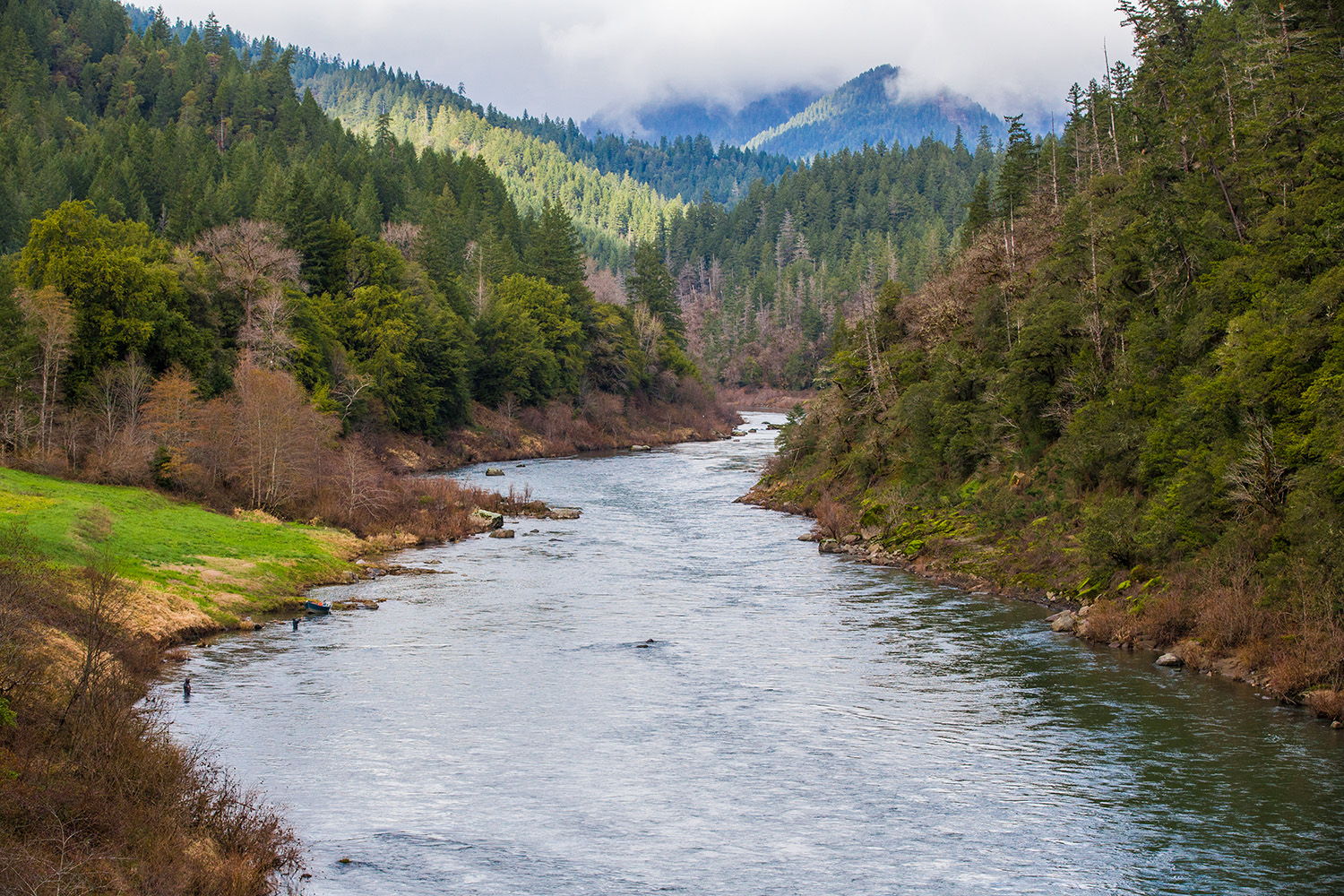
Once, he might have told the kids that they’d found a spring Chinook. Because that was the salmon you’d typically find this far upstream. For generations, the upper Rogue’s spring Chinook run has been its most prized, for anglers and salmon managers alike. Today, with springer populations in decline across the Pacific Northwest, the Rogue’s spring run is considered one of the world’s last, best, and healthiest.
But Dr. Sloat knows something here is shifting, just beneath the water’s surface. He can’t be sure, any more, what run of salmon he’s seeing. It’s a vexing mystery. And one we wouldn’t know existed, if it weren’t for the genetic detectives.

Genetic science has come a long way since the mid-2000s, before Dr. Michael Miller earned his scholarly honorifics.
“A genome is like a big instruction manual that tells you how to make an organism,” explains Dr. Miller, a genetics professor at UC-Davis. “At the time, we didn’t have a fully decoded sequence. We didn’t have the full book. Imagine that you have only certain sentences, and you don’t know their order.”
As geneticists cracked open those first sentences, Dr. Miller, then a doctoral candidate at the University of Oregon, focused on decoding snippets of steelhead DNA. His goal was a career in conservation genetics, using insights from DNA to help protect threatened species. Species like the springers he hooked as a kid on Oregon’s Molalla River.
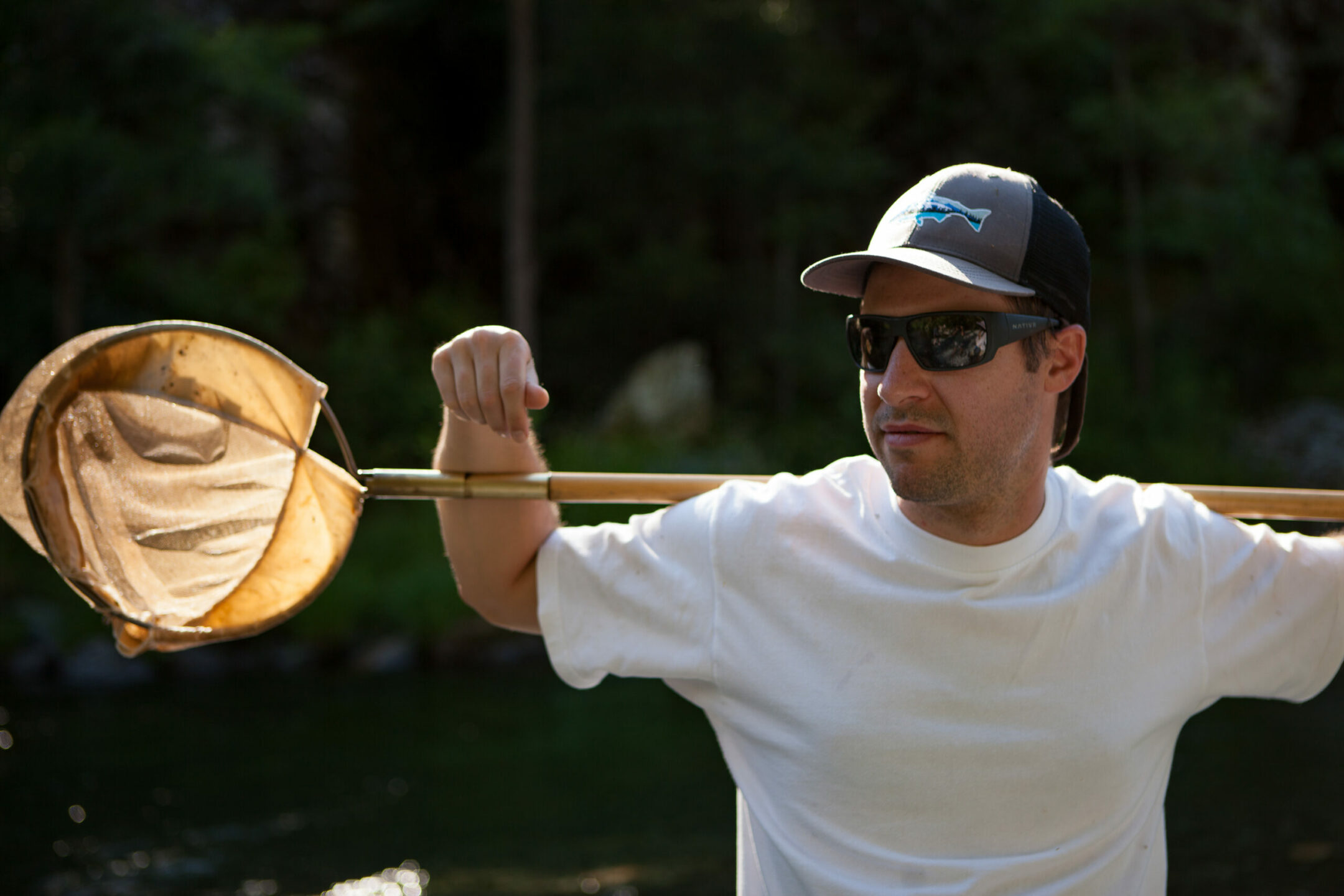
“Spring Chinook are most near and dear to my heart,” says Dr. Miller. “But back then, doing high resolution genetic analysis on salmon wasn’t feasible.”
In those heady early days—when as he says, analyzing DNA was “thousands of times more expensive and time-consuming”—the field’s limited tools could fuel some questionable correlations.
One leap, in particular, troubled the young graduate student. Data showed that in individual rivers, spring and fall Chinook shared big chunks of DNA. From this, researchers came to a conclusion that still influences salmon management policies. They argued that spring Chinook populations emerge from a river’s fall Chinook population—and that they’ve always done so: splitting off many times, in many rivers. For managers, this created a sense of safety. If spring Chinook went extinct, the geneticists reassured, they could reevolve from a river’s fall run.
In those heady early days, the field’s limited tools could fuel some questionable correlations. One leap, in particular, troubled the young graduate student.
“You know, that argument was reasonable at the time,” says Dr. Miller. Early genetic approaches could only look at overall relatedness, not specific genes. The two runs are related, he stresses; a river’s spring and fall Chinook sometimes interbreed, but usually only at low levels in healthy rivers.
But this conclusion missed one important thing. “Relatedness,” he says, “doesn’t mean that they’re not genetically distinct in critical ways.”
Dr. Miller suspected that a critical divergence lurked somewhere in the springer genome—a hunch from growing up with this fish. When he started fishing for fall Chinook, too, the space between the two felt huge: run times separated by months, different spawning grounds, vastly different fat storage (and resulting flavors). Spring Chinook’s uniqueness was a no-brainer, he thought—at least for anyone who’d ever handled one.
“When genetic methods mature,” he thought, “I’m going to figure this out.”
Below: footage of Spring Chinook on Northern California’s Salmon River (Nat Pennington).
Still a graduate student, he began amassing genetic samples for this project—steelhead and Chinook from rivers ranging from California’s Eel River to the Nooksack and Puyallup in Northern Washington. Then, in 2012, the new doctor was offered a professorship in UC-Davis’s Department of Animal Science—and his own lab.
“Run timing was the first big question I wanted to ask,” he recalls.
Spring Chinook’s uniqueness was a no-brainer, he thought—at least for anyone who’d ever handled one.
In Dr. Miller’s new lab, graduate students extracted DNA from his samples, generating millions of data points. Computational techniques had progressed enough to decode the genome’s characters, words, sentences, and paragraphs. Now, the team could read the whole instruction manual. Four, in fact: one each for winter and summer steelhead, and spring and fall Chinook.
“At first, we didn’t have the order of things, but we started to piece it together,” Dr. Miller remembers. Word for word, the exact same locus—a genetic “paragraph” composed of hundreds of thousands of nucleotides—appeared in the genomes of both spring Chinook, and summer steelhead.
There it was: the gene for early return. The team had proven a genetic divergence between spring and fall Chinook. And not only that; they’d also discovered that the same gene controlled run timing in two separate fish species. And this evolutionary split between early and late returners was ancient, they found, emerging just once in each species, sometime during the roughly 15 million years that separated them.
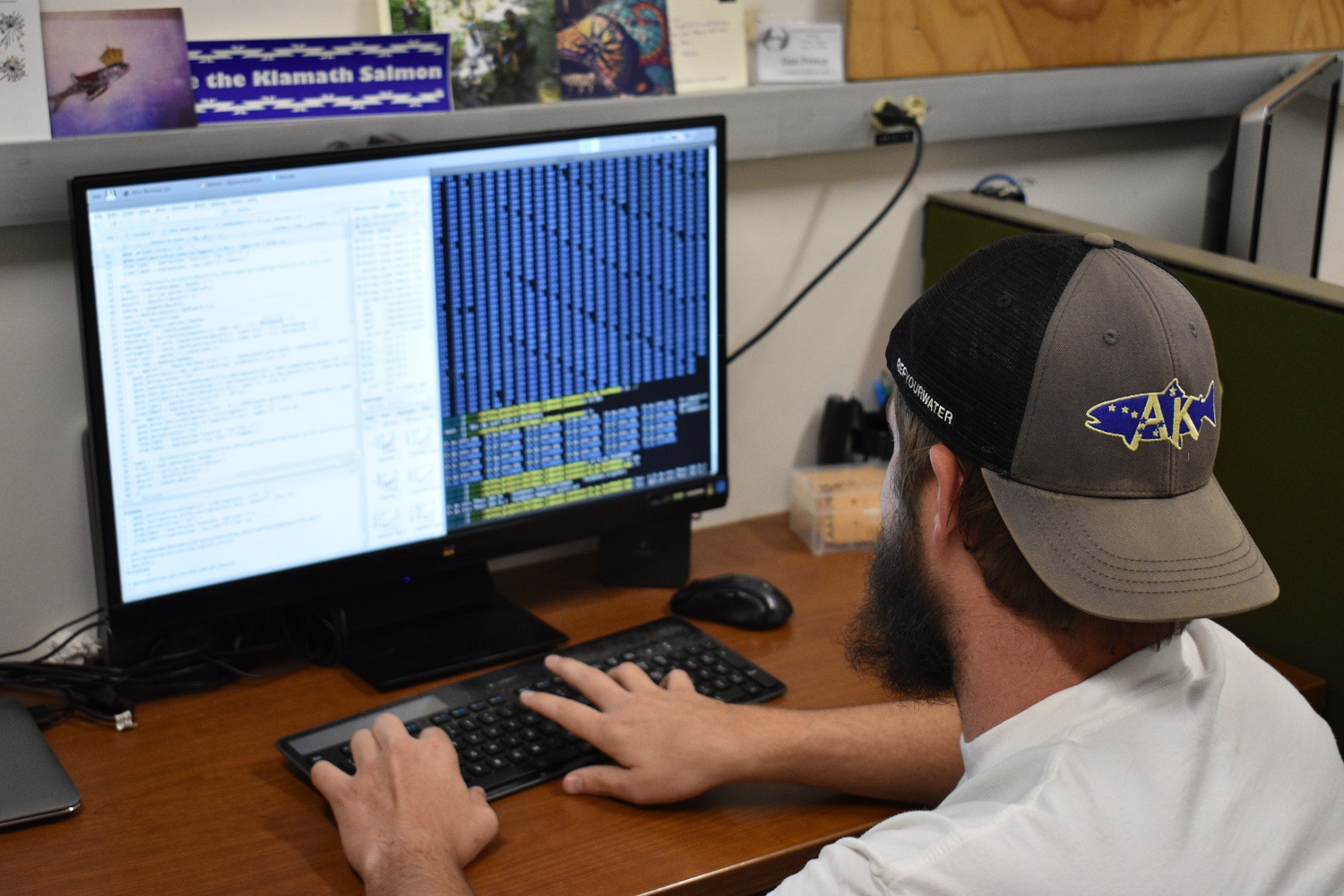
“This is the one paragraph that explains how to make spring Chinook and summer steelhead,” explains Dr. Miller. The findings, which the team published in the journal Science Advances in 2017, spurred a wave of new research. According to Dr. Sloat, the team’s discovery fundamentally changed the way scientists viewed the impact of genetics on run timing.
There it was: the gene for early return. The team had proven a genetic divergence between spring and fall Chinook.
For conservation scientists, this insight was particularly intense. What we need to understand about springers, says Dr. Miller, is that their gene variant is also their major survival advantage. By arriving early and hopscotching high into a river’s upper reaches, spring Chinook have outlasted ice ages and floods, warming temperatures and changing predators. But because this gene emerged from just one evolutionary event, concentrated in one solitary gene, this advantage is also fragile.
Dr. Miller’s work rocked the science on what it takes to be a spring Chinook, and also ratcheted up the pressure to save them. As springers struggle across their range, western science is now catching up with what the Pacific Northwest’s Indigenous people have always known: help isn’t coming from their fall-run cousins.
“Spring Chinook might already be protected if geneticists hadn’t gotten involved,” admits Dr. Miller. By claiming that fall and spring Chinook salmon were interchangeable, back in those early days, geneticists muted the urgency of the situation.
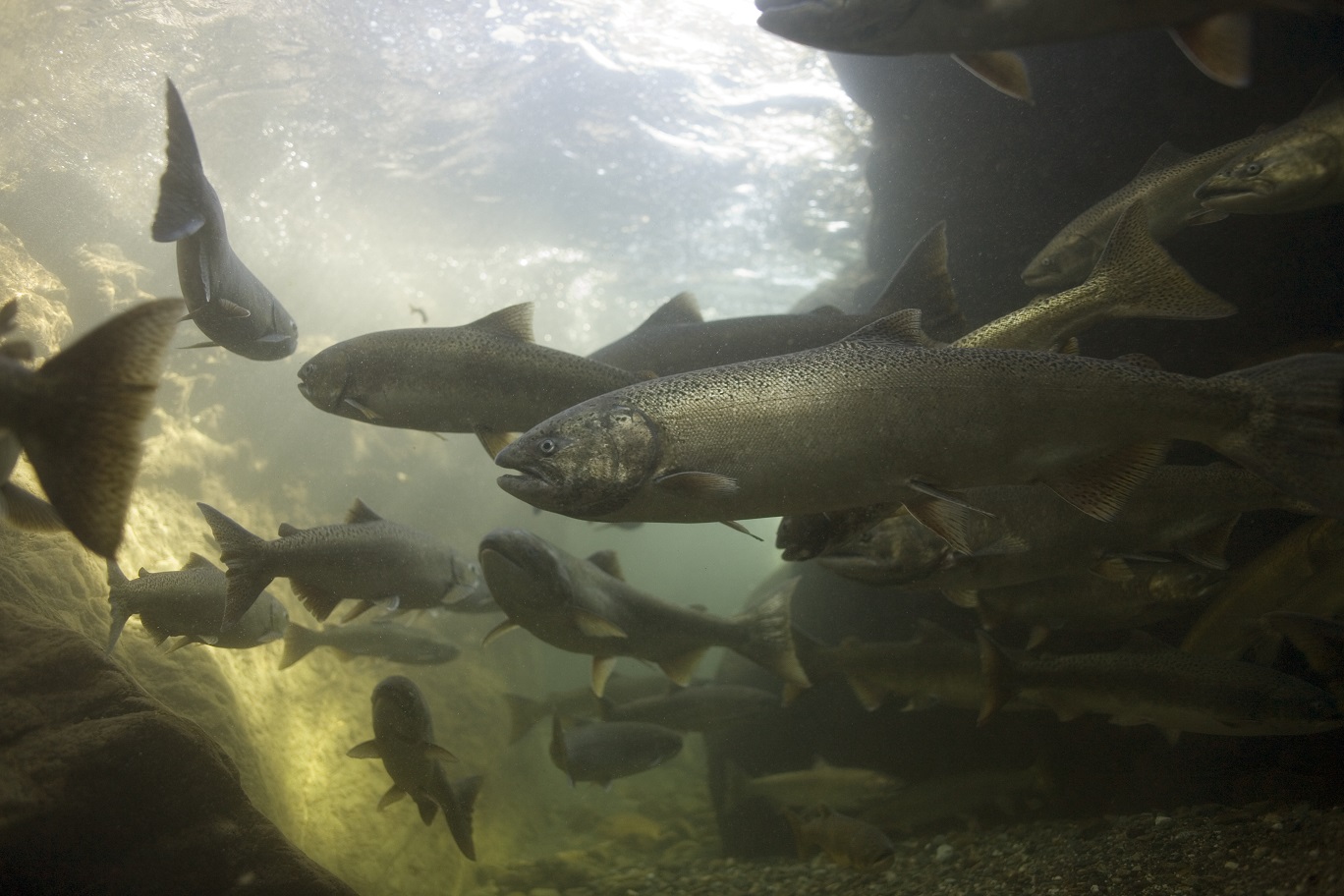
“Geneticists had a disproportionate influence on this issue, unfortunately,” he says. “And because of that, managers didn’t think springers needed general protection.”
As scientists and salmon managers lost precious time, springers’ genetic advantage has become increasingly challenged. Across the Pacific Northwest, populations are being decimated by dams, lost habitat, human development, and fast-changing rivers. That’s why the Rogue River’s seemingly robust spring and fall runs offer such hope.
Which brings us back to Dr. Sloat’s worry. If the Rogue’s spring and fall Chinook runs are healthy, why are so many now migrating right in the middle of summer? To answer that, meet Dr. Tasha Thompson, our second genetic detective. She, too, has a big question: who are all these shapeshifters, and where have the true spring Chinook gone?
If the Rogue’s spring and fall Chinook runs are healthy, why are so many now migrating right in the middle of summer?

For decades, August 15 was the day that officially ended the Rogue’s spring run.
After that day, any Chinook passing the Gold Ray Dam fish counting station at river mile 127 were tallied under the fall-run column. It’s a system that the Oregon Department of Fish & Wildlife used from the 1940s until the dam came down in 2010. For decades, this system worked.
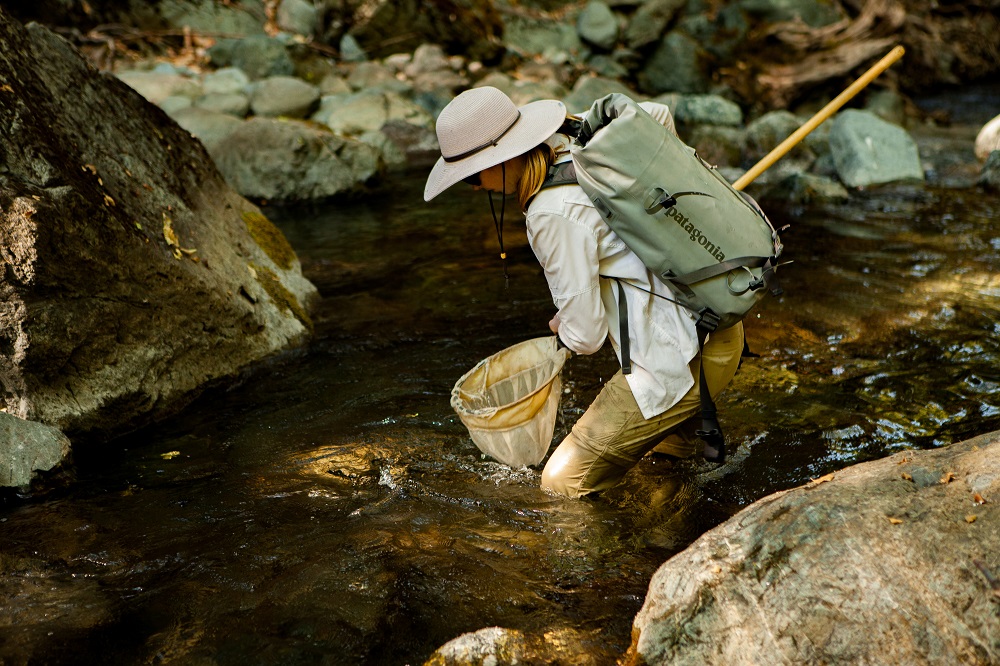
“Summer is historically the worst time for Chinook to migrate in rivers like the Rogue,” says Dr. Thompson, a Michigan State University geneticist whose interest in spring Chinook run times began with a stint in Dr. Miller’s lab while getting her PhD at UC-Davis.
Historically, few fish passed the counting station in August. Sweltering temperatures and low flows in summer and early fall precluded fish passage in the middle and lower river. By August, spring Chinook should already be higher in the river, poised to spawn at the optimal time. Meanwhile, fall Chinook are still massing at the river mouth, waiting for fall rains.
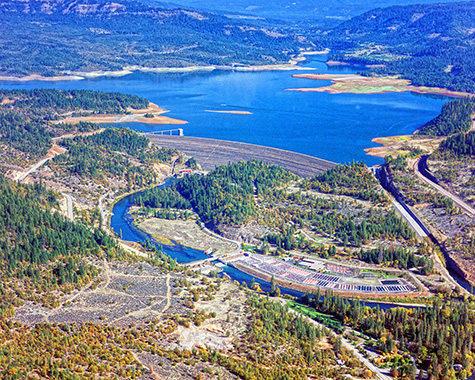
Things began to shift in 1977, with work completed on the new William L. Jess Dam thirty miles upriver. In the decade prior to the Jess Dam, ODFW data showed peak Chinook migration on the Rogue occurring between May and June: clearly a spring run. But by the mid-2000s, peak Chinook migration was in August.
“More and more are running in the hottest months,” says Dr. Thompson—risky behavior, as summer, with suffocating water temperatures and prohibitively low flows, is a very precarious time for migrating salmon.
These fate-tempting summer-running fish, she suspected, were hybrids: the progeny of both spring and fall Chinook. As Dr. Miller noted, most Chinook rivers have hybrids in small numbers. But on the Rogue, they were taking over: the product of a human roadblock.
Built without fish passage, the Jess Dam walls off an estimated 30 percent of historic springer habitat. Complicating things further, the dam also releases reservoir water in summer, cooling the river and raising water flows—conditions that encourage fall Chinook at the river mouth to migrate earlier, and travel higher. Below the dam, spring and fall runs were stacking up, competing for the same spawning gravel, and interbreeding. In a battle between competing genomes, Dr. Thompson wanted to know, who would win?
Spring and fall runs were stacking up, competing for the same spawning gravel, and interbreeding. In a battle between competing genomes, who would win?
“We wanted to know, if you have a mom spring Chinook and a dad fall Chinook (or vice versa), how exactly does the offspring behave?” says Dr. Thompson. The underlying question, she says, was whether hybrids would behave like the spring-run, the fall-run, or something else. The answer meant nothing less than the survival of springers’ unique genetic advantage.
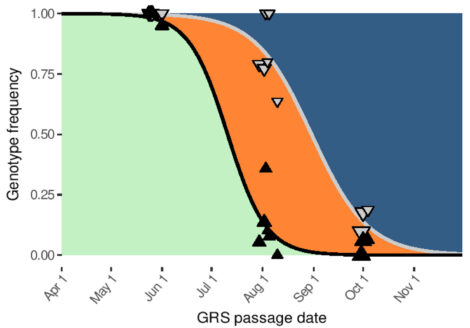
She got to work, analyzing some 269 Rogue Chinook tissue samples collected in three week-long intervals in 2004: late May, early August, and early October. For each sample group, she looked for which gene variation (spring, fall, or hybrid) were present in each individual.
The results, she says, were striking. The May-running Chinook had two copies of the springer gene. (Like us, salmon carry copies of each parental gene.) The October-running Chinook had two copies of the fall gene. And those carrying one spring copy and one fall copy—competing drives for early and late return—overwhelmingly split the difference with a hot, fraught, summertime migration.
August 15 can’t divide the Rogue’s two Chinook runs anymore, says Dr. Thompson, because the river now has three runs.
“On the Rogue, we have totally altered how natural selection works in the upper basin,” says Dr. Thompson. “And the spring Chinook are losing.”
August 15 can’t divide the Rogue’s two Chinook runs anymore, she says, because the river now has three runs. The Rogue’s true springers, those migrating between early April and late June, are disappearing.

Since Dr. Thompson published her research in 2019, some claim to see a silver lining in her work. If a copy of that springer gene lives inside first-generation hybrids, say these people, perhaps hybrids could repopulate a lost springer run?
The problem there, says Dr. Thompson, is that this scenario requires hybrids to persist after spring Chinook are gone. The Rogue isn’t the only river where Chinook populations have gone wonky. Consider two once-mighty salmon strongholds: Northern California’s Scott and Shasta Rivers. Here, fall Chinook still run despite human impacts.
But on both rivers, says Dr. Thompson, springers are now extinct. And as summers heat up, making survival even tougher, the hybrids—like bad money following good—have vanished with them.

From his raft on the Rogue, Dr. Sloat spots another carcass. He hops into the water, drawn low by a dry, hot summer, and bends for a closer look.
“On the Rogue, we’re not going to go back to pre-dam conditions,” he says. “But we can work together to help restore spring Chinook’s natural advantage.”
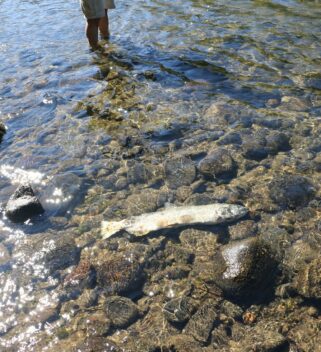
Springers just need a reason to keep being springers, he says: their own space, their own time to spawn. With fishing gear like weirs and wheels, Indigenous salmon managers have long facilitated the separation of salmon runs during homeward migration.
Now, western science is starting to heed the wisdom of approaching fall and spring Chinook as different runs with different needs—and responding when something goes wrong.
“The hybrids are showing us that we’ve thrown this river system out of balance,” says Dr. Sloat. “We created this situation, but we have a chance to help restore that.”
Could the Jess Dam’s controlled reservoir releases, for example, be tweaked to delay fall runs? Another way to thwart interbreeding, he says, could be focusing fishing on hybrids and early fall Chinook. As wild salmon face unprecedented challenges—a perfect storm of human interference and rapid climate impacts—we need creative solutions to protect spring Chinook’s ancient, unique climate resiliency.
Dr. Sloat guides the carcass to the shallows: a spawned-out hen, with beautiful black spots and a translucent tail shredded from digging her redd. From here, we can’t tell if she’s a spring Chinook, fall Chinook, or a summer-running hybrid. But thanks to the genetic detectives, we have new tools to read her, and to write a better story.
One where springers can climb high into rivers across the North Pacific, and thrive.
“The hybrids are showing us that we’ve thrown this river system out of balance,” says Dr. Sloat. “We created this situation, but we have a chance to help restore that.”
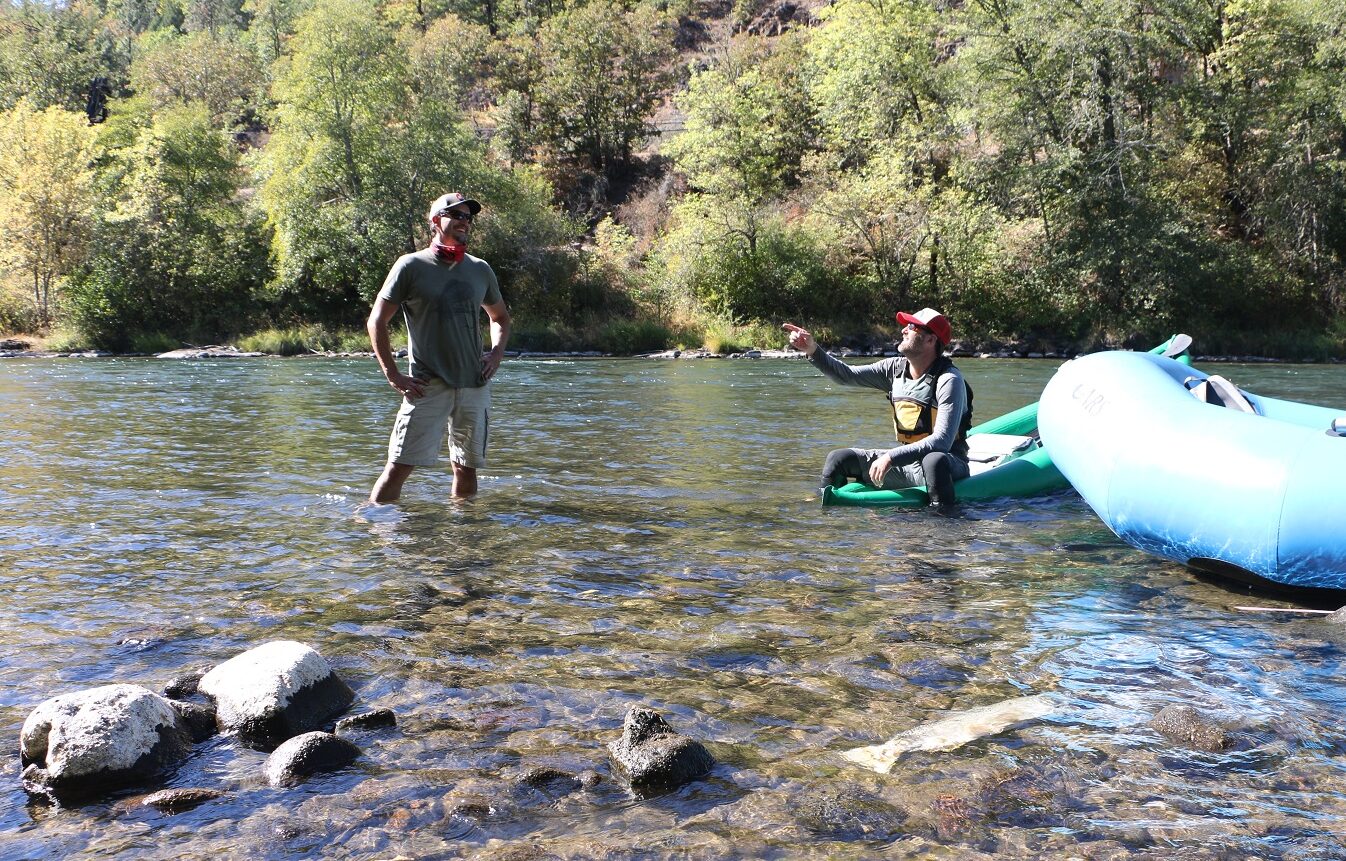
Spring Chinook Series | Part I | Part II | Part III | Part IV

